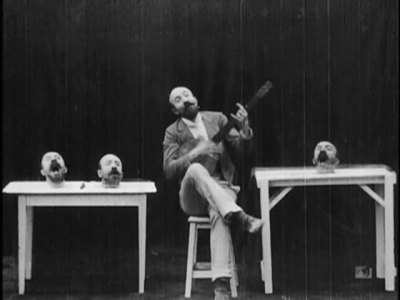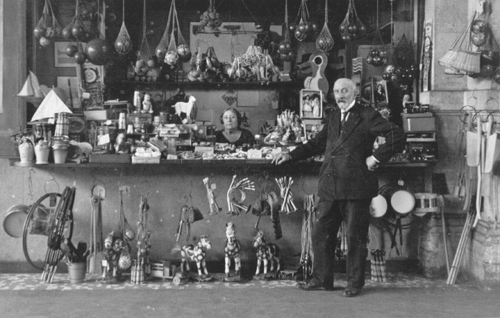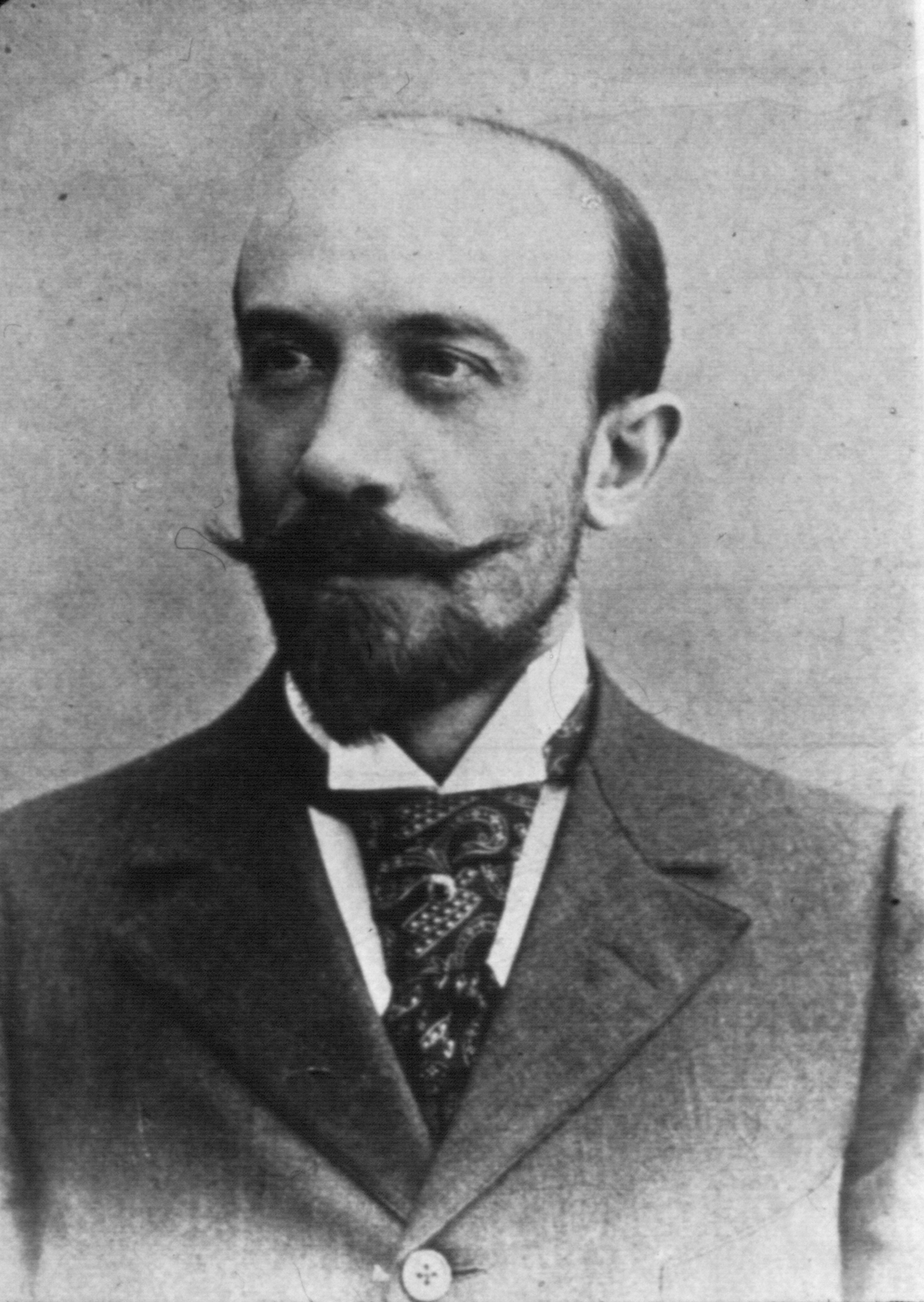Georges Méliès (1861-1938) was a stage magician in France before becoming one of the most influential filmmakers of all time. In 1888 he became the owner and manager of the famed Théâtre Robert-Houdin, a theater devoted to magic founded by the most famous magician of the 19th century, Jean Eugene Robert Houdin (American magician Ehrich Weiss adopted the stage name "Harry Houdini" in honor of this same magician). The purchase of the theater came along with many of Robert-Houdin's automata, which were performing robotic figures.
Performing as a magician and managing other magic acts, he began devising "Magic scenes." These were short plays or vignettes that told a story incorporating various magical tricks into the action. They were complete with hand-painted sets (designed and painted by Méliès), elaborate costumes (also designed by Méliès) and many mechanical wonders designed and built by Méliès. Often these "magic scenes" were based on fairy tales or other fantastical tales. Much of this would be applied to his films.
He was present at one of the first ever screenings of a projected film, shown by the Lumieres, and immediately attempted to buy a camera from the brothers. They refused, claiming they intended their invention only to document serious things and never frivolous things like magic (in truth they were protecting their ability to be the only ones making films, since they were the only ones with a camera capable of filming projectable film). Méliès bought a projector from them instead (they were happy to sell projectors as it meant they were able to sell more copies of their films) and converted it into a functioning camera.
His very first films were merely filmed versions of some of his popular stage magic acts. He soon realized that film allowed him to do tricks that were not possible otherwise. His first breakthrough came when he was testing his camera by filming traffic on a Paris street and the camera jammed for a few moments. When playing the film back, a city bus turned into a hearse (both of the horse pulled variety, or course). What had happened was the camera had jammed when a bus drove by and started again when a hearse was in the same spot. This, and his later experiments in double exposures became the basis of many of his special effects, for which he became famous.
 |
| By filming the scene multiple times, with black cloth covering anything unwanted, Méliès could duplicate himself or parts of himself, a trick he used frequently. |
 |
| Méliès at work building sets in his studio. It was made of glass to let in sunlight, as electric lights at the time were not yet bright enough to expose the film. |
 |
| Méliès in his toy shop. |
Here are some of his magic trick films:
"The Four Troublesome Heads" (1898)
"One Man Band" (1900)
"The Man With the Rubber Head" (1901)
"The Music Lover" (1904)
"The Devilish Tenant" (1909)
His most famous film, "A Trip to the Moon," is typical of his later fantasy films:
"A Trip to the Moon" (1902)
 |
| The most famous image from his most famous film, hand-tinted (as all his films originally were). |
The film Hugo (2011), directed by Martin Scorcese and based on the book "The Invention of Hugo Cabret" by Brian Selznik, is a fictional account of the rediscovery of Méliès in the 1930's. Both the book and the film are excellent, and the Méliès material is more or less accurate. The film has the advatange of showing clips from actual Méliès films. Hugo is currently streaming on Netflix and available on DVD; most of the public libraries have copies of both the film and the book.

No comments:
Post a Comment